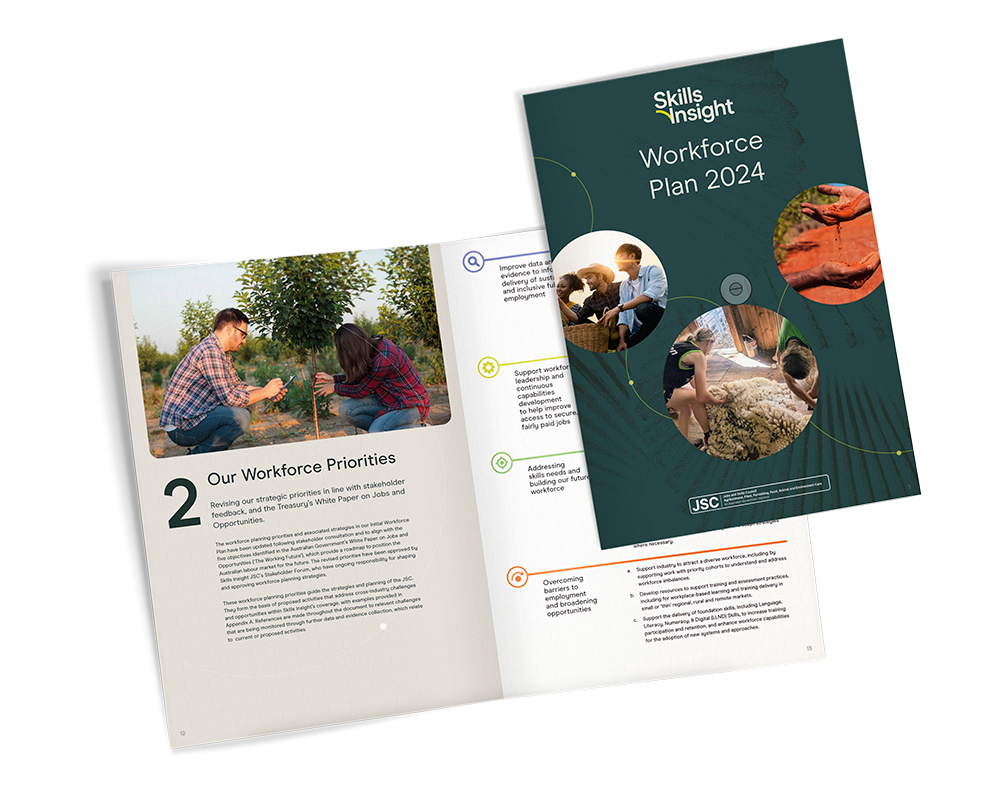Australia’s broadacre cropping industries comprise generally large-scale operations that produce a range of high-quality commodities, including wheat, rice, oats, rye, barley, corn, peas, millet and sorghum. Many broadacre farms also diversify into different cereal-cropping activities and sometimes into livestock farming. Skills in sustainability, irrigation, soil health, fertiliser use, pest management and technology use are highly valued.
Key updates
Irregular demand reflected through worker statistics
Annual employment in key occupations (Crop Farmers, Mixed Crop and Livestock Farmers, Crop Farm Workers, Mixed Crop and Livestock Farm Workers) has been highly volatile in the Labour Force Survey. This is in line with the cyclical performance of grain growers, where the inverse relationship between price and volume fluctuates with market conditions. For example, workers in Mixed Crop and Livestock Farming increased by 7,400 between 2022 and 2023, likely due to exceptional climate conditions for Australian crop production.
Workers adjust to cyclical labour supply by long work hours
The Labour Force Survey has also shown that whilst cumulative hours worked have been declining over a decade in all key occupations, the individual hours worked have been variable, often remaining persistently higher than 40 hrs/week
in 2023.
Opportunities
Introduction of workplace reforms
Legislative changes that promote fair employment practices, such as the Secure Jobs legislation from December 2023, and the Fair Work Amendment (Closing Loopholes) Bill 2023 can contribute to greater workforce conditions and worker stability.
Increased industry revenue
Disruptions in global grain supply due to geopolitical conflicts have been elevating grain demand and costs. Australia has increased its output volume in recent years, aided by high rainfall. This may have increased demand for new industry entrants.
Challenges
Underrepresentation of women
Women represented 26% of the workforce in the 2021 Census, which was only up 1% from 2016.
Ageing Workforce
54% of the workforce are aged 50 years and over, according to the 2021 Census. Attraction and retention of younger people to the industry is critical for succession planning needs.
Climate change
Fluctuating weather patterns are impacting on growers’ practices associated with planting times, frost windows, pest and disease risk, and extreme weather event (e.g. bushfire and drought) preparedness. With concurrent rises in input costs (e.g. fertilisers and soil nutrients), farmers are reporting supply chain vulnerabilities.
Data monitoring priorities

25,991
workers
(2021 Census)
1.5%
First Nations
(2021 Census)
5,000
2028 Projection
(JSA Projections)

26%
Female
(2021 Census)

Workforce Plan 2024
The Workforce Plan describes workforce challenges and skill opportunities identified by stakeholders across the industries we work with and outlines strategies to address them.
The 2024 Workforce Plan outlines four key Workforce Planning Priorities to guide the strategies and planning of our JSC work, retaining the strategic intent of the Initial Workforce Plan, with modifications to align with the Australia Government’s White Paper on Jobs and Opportunities.